
The brown-headed barbet is an Asian barbet species native to the Indian subcontinent, where it inhabits tropical and subtropical moist broadleaf forests.

Trigonostemon is a plant genus of the family Euphorbiaceae and the sole member of its tribe (Trigonostemoneae). It was first described as a genus in 1826. It is native to Southeast Asia, southern China, the Indian Subcontinent, Queensland, and a few islands in the western Pacific.
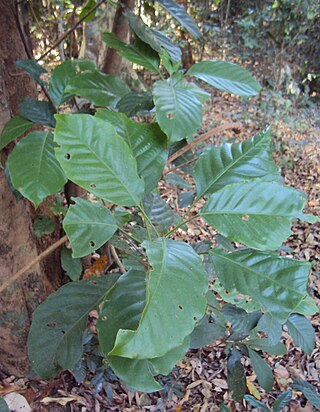
Paracroton is a genus of flowering plants in the Euphorbiaceae first described as a genus in 1859. It is native to South and Southeast Asia, as well as New Guinea.
- Paracroton integrifolius(Airy Shaw) N.P.Balakr. & Chakr. - Kerala, Tamil Nadu
- Paracroton pendulus(Hassk.) Miq. - India, Sri Lanka, Myanmar, Thailand, Malaysia, Borneo, Sumatra, Philippines
- Paracroton sterrhopodus(Airy Shaw) Radcl.-Sm. & Govaerts - W New Guinea
- Paracroton zeylanicus(Müll.Arg.) N.P.Balakr. & Chakr. - Sri Lanka

Blumeodendron is a genus of dioecious trees of the family Euphorbiaceae first described as a genus in 1873. It is widespread across much of Southeast Asia and Papuasia.

Ostodes is a genus of plants under the family Euphorbiaceae first described as a genus in 1826. It is native to southern China, the Himalayas, and parts of Southeast Asia.
- Ostodes kuangiiY.T.Chang - Yunnan
- Ostodes paniculataBlume - Hainan, Yunnan, Tibet, Nepal, Sikkim, Bhutan, N Bangladesh, Assam, Thailand, Myanmar, W Malaysia, Borneo, Java, Sumatra
Mischodon is a genus in the family Picrodendraceae, described in 1854. The only known species is Mischodon zeylanicus, a tree native to southern India, Sri Lanka, and the Andaman Islands.

Hoya carnosa, the porcelainflower or wax plant, is a species of flowering plant in the dogbane family Apocynaceae. It is one of the many species of Hoya that are native to Eastern Asia. It is a common house plant grown for its attractive waxy foliage, and sweetly scented flowers. It is grown well in pots and hanging baskets.

The Indian chameleon is a species of chameleon found in Sri Lanka, India, Pakistan and select other parts of South Asia. Like other chameleons, this species moves slowly with a bobbing or swaying movement and are usually arboreal. They have an extremely long and sticky tongue, which they use to catch insects from several feet away. Also like other chameleons, C. zeylanicus has bifurcated feet with a tongs-like shape, a prehensile tail, independent eye movement, and the ability to rapidly change skin colouring and patterns. Despite common misconceptions, they do not change their visual appearance based on their surroundings or background, or even for camouflage, and may not even be able to perceive colour differences; rather, it is primarily for communication with others of their species, including to signify the receptiveness of a female or submissiveness in general disputes. Additionally, colouring can change for controlling body temperature, changing to darker colours to absorb heat, or lighter to cool themselves.
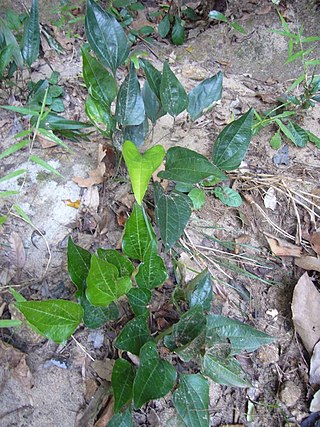
Trichopus zeylanicus is a small herbaceous plant, which is one of only two species of its genus, Trichopus. Formerly it was placed in its own family, Trichopodaceae, but is now included in the family Dioscoreaceae. The leaves are about 20 centimetres (7.9 in) long and grow from a rhizome. The shape of the leaves can be highly variable even within one location, but the most common shape is cordate. The herb grows on sandy soil near rivers and streams in shady places in lowland and intermediate altitude forests. It flowers year long and the fruits are thought to be dispersed by water. The unusual flowers are purplish black.
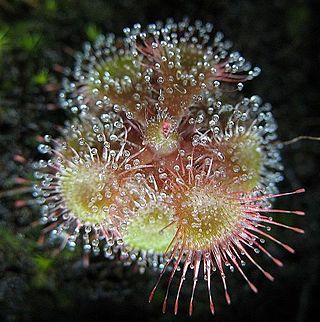
Drosera burmanni, the tropical sundew, is a small, compact species in the carnivorous plant genus Drosera. Its natural geographical range includes the tropical and subtropical regions of Asia and Australia. It normally spans only 2 cm (0.8 in) in diameter. It is one of the fastest trapping sundews as well, and its leaves can curl around an insect in only a few seconds, compared to the minutes or hours it takes other sundews to surround their prey. In nature, D. burmanni is an annual, but in cultivation, when grown indoors during the cold months, it can live for many years. Since D. burmanni is an annual, it produces large amounts of seed. Drosera burmanni has been considered a powerful rubefacient in Ayurveda.

The straw-headed bulbul is a species of songbird in the bulbul family, Pycnonotidae. It is found from the Malay Peninsula to Borneo. Its natural habitats are subtropical or tropical moist lowland forest, subtropical or tropical mangrove forest, subtropical or tropical moist shrubland, arable land, plantations, and rural gardens. It is threatened by habitat loss and poaching.
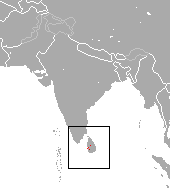
The jungle shrew is a species of mammal in the family Soricidae endemic to Sri Lanka. Its natural habitat is subtropical or tropical dry forests. It is threatened by habitat loss.

Allophylus is a genus within the plant family Sapindaceae. It includes 211 species with a pantropical distribution.

Allophylus zeylanicus is a species of plant in the family Sapindaceae. It is endemic to Sri Lanka.

Johannes Burman, was a Dutch botanist and physician. Burman specialized in plants from Ceylon, Amboina and Cape Colony. The name Pelargonium was introduced by Johannes Burman.
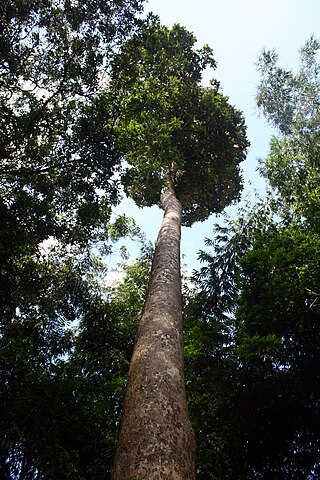
Dipterocarpus zeylanicus, commonly known as හොර - Hora in Sinhalese and සරල - Sarala or කිරිපලු - Kiripalu, is a species of Dipterocarpus that is endemic to Sri Lanka. A closely related Indian species is Dipterocarpus turbinatus. The Sri Lankan tree is a large tree that grows up to 40 – 45 m tall and 4 – 6 m in circumference. The bark is light pinkish brown or light yellowish brown. Leaves are big and oval, 5 to 8 inches long. The sharp-edged leaves are covered with silver hairy. Flowers bloom in April and seeds have two wings to spread from wind. The bark contains considerable amounts of gray caller oleo resin. D. zeylanicus can be found in moist low country like Ratnapura, Kaluthara, Galle and Mathara districts and also in the Sinharaja rain forest. The tallest trees of Hora in Sri Lanka are found in Udakiruwa village in Lunugala and under great threat of legal/illegal felling. There are many place names which begin with the name of the Hora tree. Even Tamil place names like Norochcholai is said to refer to a clump of Hora trees - i.e., "Horagolla" in Sinhalese.

Neurocalyx is a plant genus in the coffee family Rubiaceae. Species are found in southern India and Sri Lanka.
Cyathocalyx zeylanicus is a plant species within the genus Cyathocalyx of the family Annonaceae. It is endemic to Western Ghats and Sri Lanka.

Paracroton pendulus is a species of flowering plant in the family Euphorbiaceae that is endemic to Western Ghats of India and Sri Lanka.
Leucocoprinus zeylanicus is a species of mushroom producing fungus in the family Agaricaceae.


















